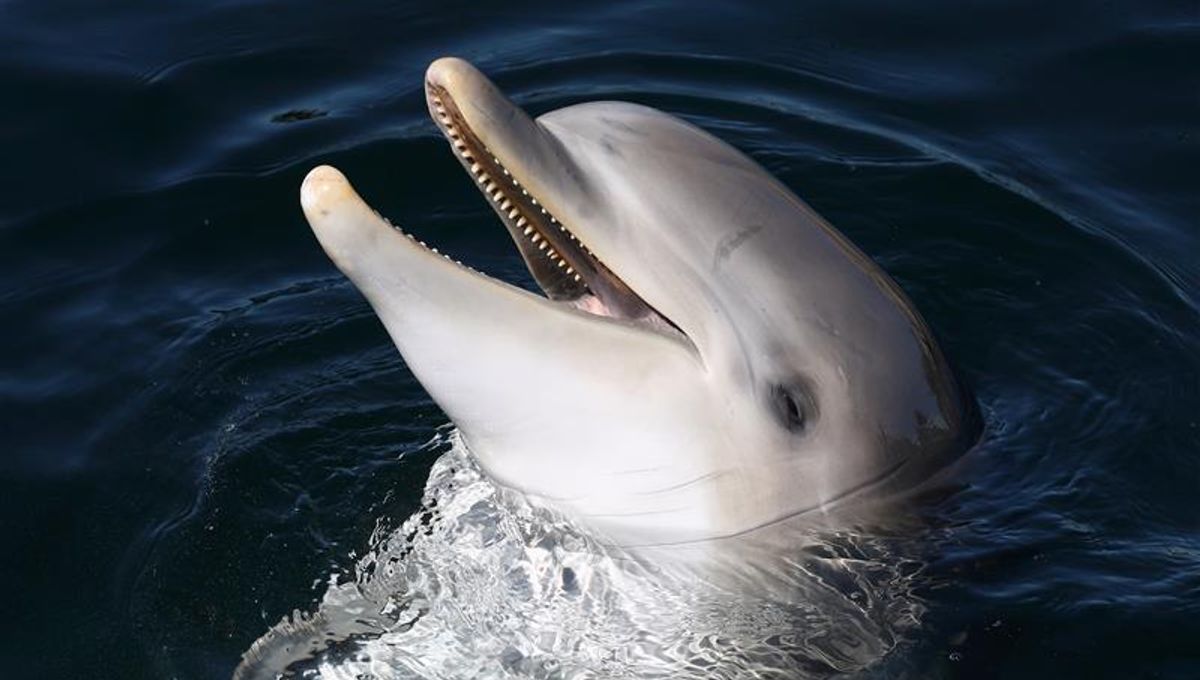
Dolphins have been observed interacting with manatee calves in unusual behavior, some of which has been aggressive and hostile. But while researchers are not sure why they are doing it, it is clearly deliberate.
Over a 21-year period, researchers documented 10 interactions between bottlenose dolphins (Tursiops truncates) and Antillean manatee calves (Trichechus manatus manatus) in Belize, in the Caribbean Sea. The interactions, which were directed at orphaned calves as well as those accompanied by their mothers, are complex and hard to understand, but some were just outright violence.
Bottlenose dolphins and Antillean manatees share their range and preferred habitats in these waters where they hunt and forage among the same seagrasses. This likely increases the chances of them encountering one another, but it is not currently clear whether the aggressive behaviors recorded by researchers were due to random encounters or whether they were targeted.
“The dynamics of these interactions remain poorly understood,” Dr Eric A. Ramos and colleagues write in a new paper on the subject. “For example, it is unclear whether dolphins encountered calves by chance or not, or if they approached and interacted with them out of curiosity, or if they actively sought out lone calves, or if dolphins separated the calves from their mothers.”
But “regardless of the circumstances by which encounters took place, dolphins clearly initiated interactions with manatee calves in all cases.”
Ambiguous and unambiguous activities
Although scientists are still not sure what is going on, dolphins are known to display certain behaviors towards their own young and the calves of other species. Some of these behaviors were observed between dolphins and manatee calves.
For instance, in one case described by Ramos and his team, a group of five adult dolphins were seen interacting with a young manatee in 1999. The group detected a manatee calf and then “surrounded” it. But in this interaction, the behavior observed appeared to be “affiliative” as the animals rubbed against the calf and demonstrated supportive behaviors similar to those practiced with their own young.
But in other cases, things got a bit murkier or turned nasty.
In 2015, an adult dolphin appeared to be harassing a baby manatee on footage recorded by bystanders. In 2018, four dolphins were seen interacting with a group of manatees. These animals appeared to be harassing a mother and trying to separate her from her calf. Then a single adult dolphin focused in on the calf and “was observed displaying aggression and attacking” it. This included ramming the calf and biting it. The calf was manually retrieved by conservationists and rehabilitated.
In 2009, a sick solitary female manatee calf was rescued from the water and taken to Belize City to recover. During an examination of its body, the calf had multiple deep skin lacerations and marks consistent with dolphin tooth rakes. The calf recovered from its condition and was reintroduced to the wild in 2012.
The examination of multiple other calves recovered during this period also demonstrated clear signs of attack from dolphins, some of which died before they could be rescued. Although it cannot be said that their deaths were a direct result of these attacks, it does show that these animals are interacting more frequently than previously thought and that the nature of these interactions is complex.
“Identifying if interactions with dolphins contributed to the death of manatee calves was not possible,” the authors write. “For example, bottlenose dolphins interacting with a manatee calf may unintentionally or intentionally separate it from its mother leading to a mother-calf separation. Additionally, these calves may be physically impaired and have underlying health complications that increase their likelihood of becoming lost or abandoned by their mothers.”
Understanding what is going on here and what the driving forces behind these interactions are will require further investigation.
“Future stranded manatees should be systematically examined and complete necropsies should be conducted to identify the cause of death. The use of aerial drones proved highly effective for describing the interaction between dolphins and manatees at a relatively fine spatial and temporal scales.”
Still, while we are not completely sure what is going on here, the research provides insights into a previously unreported interspecies interactions.
Dolphins can certainly be jerks, as has been observed on many occasions in the past, but if their behavior is impacting the lives of manatees then conservationists need to know, as the latter are already a threatened species.
The study is published in PLOS ONE.
Source Link: Dolphins Are Deliberately Harassing Baby Manatees, But No One Knows Why